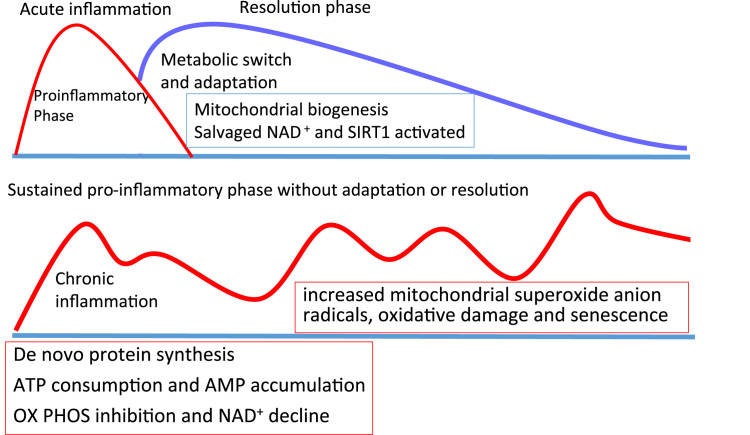Fig. 10.
Metabolic drivers for the resolution of inflammation to prevent chronic inflammation. During the acute inflammatory response (red line), innate immune cells are dependent on glycolysis. The induction of a resolution phase (blue line) is necessary to prevent persistent inflammation and oxidative damage. The switch is driven by ROS-enhanced HIF1α stability and the activation of SIRT1 by increasing concentrations of salvaged NAD+ which increases the rate of mitochondrial activity. If an inflammatory stimulus persists or resolution is not implemented effectively, possibly by a failure to induce sufficient ROS as observed in chronic granulomatous disease and rheumatoid arthritis, HIF1α is not stabilised and oxidative phosphorylation continues to be inhibited. Chronic inflammation associates with increased mitochondrial superoxide, oxidative damage and innate immune senescence with a failure to resolve the inflammatory event.

